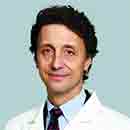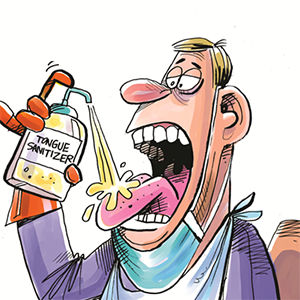Serious liver disease is up among heavy drinkers, even without more drinking
Published in Health & Fitness
LOS ANGELES — Serious liver disease is becoming more common among Americans who drink heavily, according to a new study from Keck Medicine of USC.
It's not that more people are partying with alcohol. And it's not that the drinkers are having more drinks. It's that more of the people who drink regularly are becoming sick.
Over the last two decades, the share of heavy drinkers who have advanced liver scarring jumped from 1.8% to 4.3%. For women, more than 1.5 drinks per night, on average, is considered heavy drinking. For men, it's 2 drinks.
"The fact that the risk not only increased but that it more than doubled — almost tripled — is really astonishing," said Dr. Brian P. Lee, a liver transplant specialist at Keck Medicine of USC and lead author on the study.
It was published in the journal Clinical Gastroenterology and Hepatology on Wednesday. Lee said he thinks patients might dramatically change their thinking and behavior if they had this information.
The increase in illness was seen especially in women, older people and those with conditions like obesity or diabetes.
Three USC researchers analyzed national health data from more than 44,000 adults surveyed between 1999 and 2020 in a well-known national heath study known as NHANES. Of those, 2,474 were heavy drinkers according to the definition of the National Institute on Alcohol Abuse and Alcoholism — 20 grams of alcohol per day for women and 30 grams for men, roughly the equivalent of 1.5 and 2 drinks.
They found a more than twofold increase over the two decades in significant liver fibrosis, a condition where healthy liver tissue is replaced by stiff, fibrous tissue — like a sponge hardening into leather. If left unchecked, this can eventually lead to liver failure or cancer.
By comparison, non-heavy drinkers saw a much smaller increase, from 0.8% to 1.4% over the same period.
This rise in liver damage is especially troubling because many people don't realize anything is wrong until the disease is advanced. "Liver disease is silent," Lee said. "Most people won't, even if they have [advanced liver scarring], have any symptoms at all."
Drinking patterns did not change much over the study period. But the health profiles of heavy drinkers did. Rates of metabolic syndrome — a cluster of conditions including obesity, diabetes, and high blood pressure — increased from 26% of people, to nearly 38%. Demographics shifted too: heavy drinkers became more likely to be women, people over the age of 45, and those living in poverty.
"We're showing with this study that the picture of the American drinker is changing dramatically," Lee said. "You have more women who are drinking heavily, more ethnic minorities who are drinking heavily, and these are groups that are known to have a higher sensitivity to alcohol in causing liver damage."
Other factors may also be at play, said Dr. Sammy Saab, medical director of the Pfleger Liver Institute at UCLA, who was not involved in the study. People could be consuming different types of drinks, or at different times. "Have we moved away from beer, wine, to hard cocktails? Have we moved away from drinking with food, where the food absorbs some of the alcohol you consume, versus drinking without food where alcohol is better absorbed?" Saab asked.
Then there are cultural changes, he said. "In the old days, if you drank, you'd still have to drive home, but now we've got Uber, we have Lyft," he said, which may remove some deterrents to heavy drinking.
The current definition of heavy drinking in the U.S. may actually be too lenient, Lee said, especially compared to evolving global standards. Canada, for example, now advises no more than two drinks per week to minimize health risks.
"In the U.S. right now, we consider heavy drinking to be eight drinks or more per week for women and 15 or more for men — but that's quite high," he said. "We've shown in prior studies that you can develop liver disease at lower quantities than the U.S. threshold."
The study's findings highlight the need to rethink long-held assumptions about alcohol-related liver disease, and Lee hopes it can be used to develop more effective screening methods for early detection.
The paper raises a lot of good questions, Saab said, serving as a call to action for researchers and clinicians to better understand this increase in alcohol-associated liver disease — and how to stop it.
©2025 Los Angeles Times. Visit latimes.com. Distributed by Tribune Content Agency, LLC.










Comments